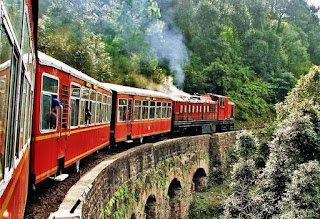The railway was built under the direction of Herbert Septimus Harington between 1898 and 1903 to connect Shimla, the summer capital of India during the British Raj, with the rest of the Indian rail system. Its early locomotives were manufactured by Sharp, Stewart and Company. Larger locomotives were introduced, which were manufactured by the Hunslet Engine Company. Diesel and diesel-hydraulic locomotives began operation in 1955 and 1970, respectively. On 8 July 2008, UNESCO added the Kalka–Shimla railway to the mountain railways of India World Heritage Site.
Toy Train Shimla History
This meant that twice a year it was necessary to transfer the entire government between Calcutta and Shimla by horse and ox drawn carts. In 1891 the 1,676 mm (5 ft 6 in) broad-gauge Delhi–Kalka line opened, which made the construction of a branch line up to Shimla feasible. The earliest survey was made in 1884 followed by another survey in 1885. Based on these two surveys, a project report was submitted in 1887 to the government of British India. Fresh surveys were made in 1892, and 1893 which lead to four alternate schemes being suggested - two adhesion lines 67.25 mi (108.23 km) and 69.75 mi (112.25 km) long and two rack lines. Fresh surveys were again made in 1895 from Kalka to Solan with a view to determine whether a 1 in 12 rack or 1 in 25 adhesion line should be chosen. After much debate an adhesion line was chosen in preference to a rack system.
Construction of the Kalka–Shimla railway on 2 ft (610 mm) narrow-gauge tracks was begun by the privately funded Delhi-Ambala-Kalka Railway Company following the signing of a contract between the secretary of state and the company on 29 June 1898. The contract specified that the line would be built without any financial aid or guarantee from the government. The government however provided the land free of charge to the company. The estimated cost of 8,678,500 rupees doubled by the time the line was opened. The Chief Engineer of the project was H.S. Herlington.



No comments:
Post a Comment